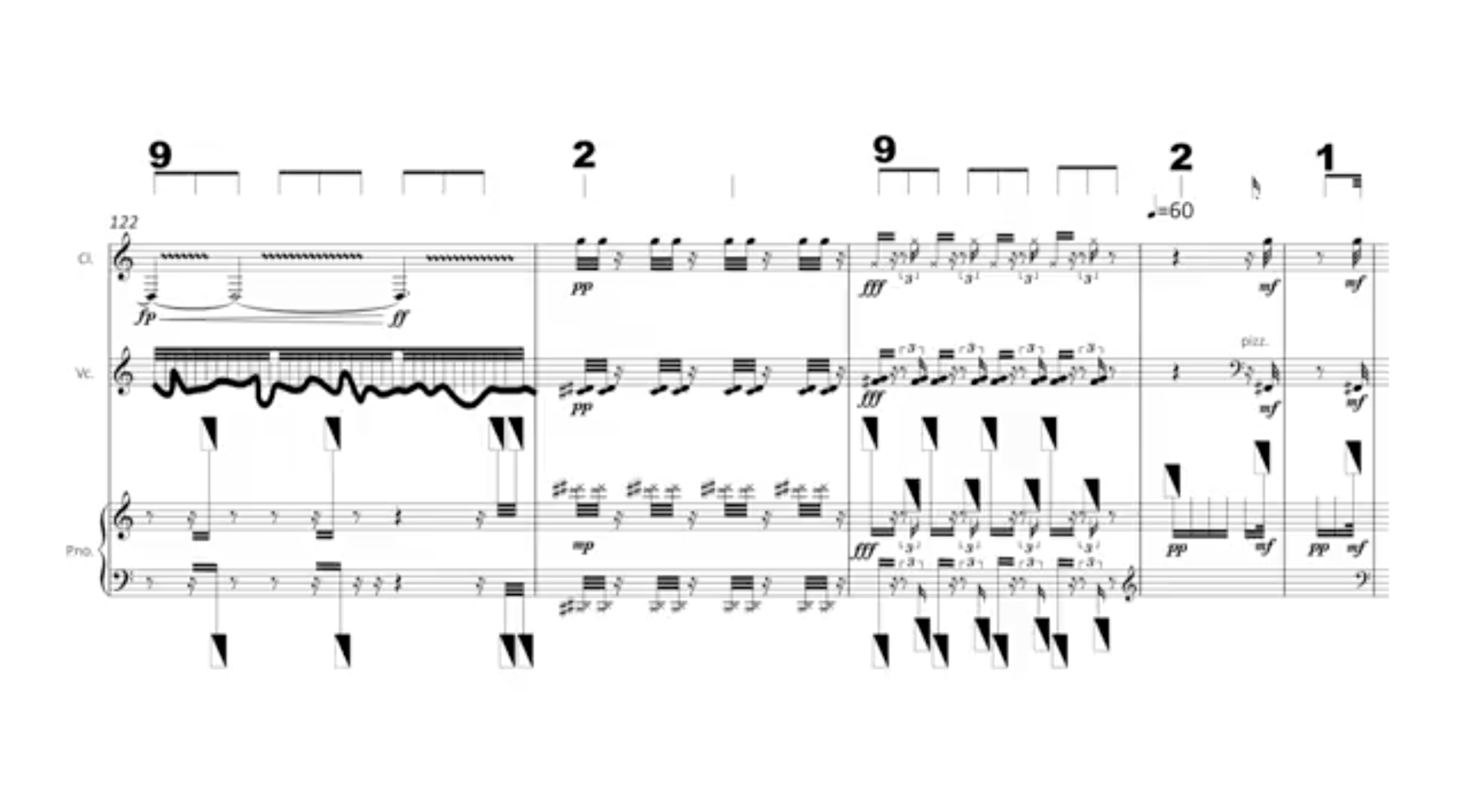
performed by and dedicated to Trio Catch
premiered and recorded live at the ECLAT Festival in Stuttgart (Germany) by SWR on 3rd February 2018 in Theaterhaus Stuttgart.
»sugarcoating #2« is the second piece in the sugarcoating series, which was initially based on re-adapting major sound fetishes in pop-music, based on data provided by Million Songs Dataset, a freely-available collection of audio features and metadata for a million contemporary popular music tracks. If observed from a purely parametrical perspective, those are: reduction and homogenization of pitch and texture, increase in loudness, repetition (loop) and an additional one, which happens to be a by product of other parameters, and that is – density. Density is, in this case, transferred back to the musician(s) by pushing their concentration to the limit by “overwhelming” them with information and micromechanics of perfection. sugarcoating #2 takes a step toward examining the properties of digital information, which can be summed up in 5 terms: synchronization, formal language, errors, copying, granularity and compression.
“… Beyond the specific outcomes discussed above, we now focus on the evolution of musical discourse. Much of the gathered evidence points towards an important degree of conventionalism, in the sense of blockage or noevolution, in the creation and production of contemporary western popular music. Thus, from a global perspective, popular music would have no clear trends and show no considerable changes in more than fifty years. Pitch codeword frequencies are found to be always under the same underlying pattern: a power law with the same exponent and fitting parameters. Moreover, frequency-based rankings of pitch codewords are practically identical, and several of the network metrics for pitch, timbre, and loudness remain immutable. Frequency distributions for timbre and loudness also fall under a universal pattern: a power law and a reversed log-normal distribution, respectively. However, these distributions’ parameters do substantially change with years. In addition, some metrics for pitch networks clearly show a progression. Thus, beyond the global perspective, we observe a number of trends in the evolution of contemporary popular music. These point towards less variety in pitch transitions, towards a consistent homogenization of the timbral palette, and towards louder and, in the end, potentially poorer volume dynamics.”
– excerpt from Measuring the Evolution of Contemporary Western Popular Music by Joan Serra, Alvaro Corral, Marian Boguna, Martın Haro & Josep Ll. Arcos2